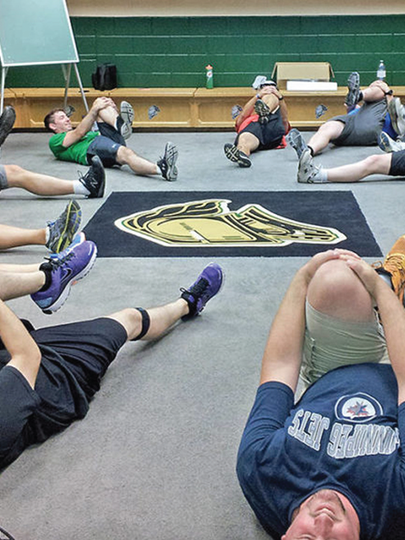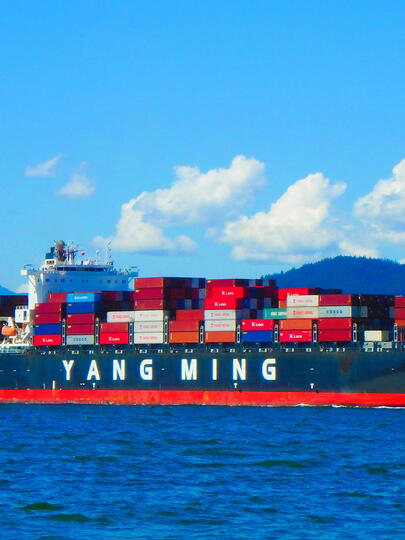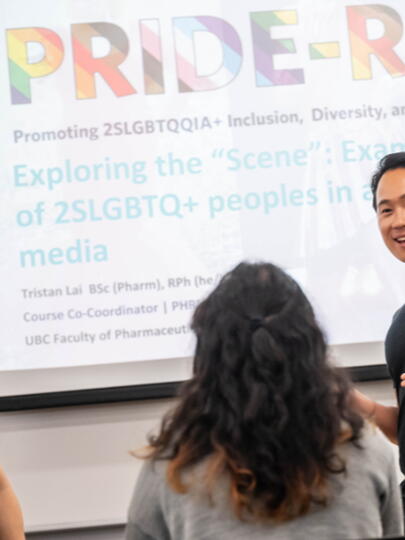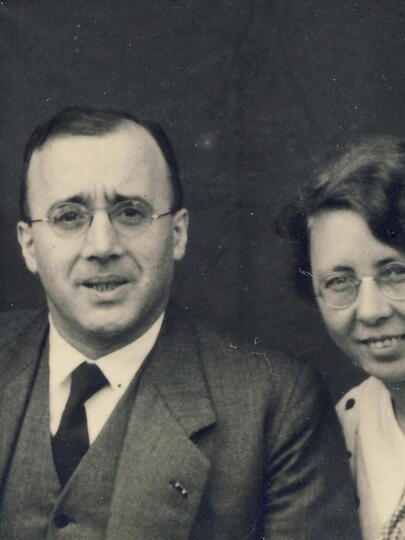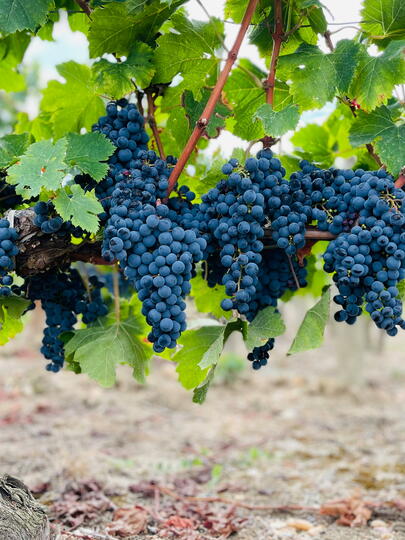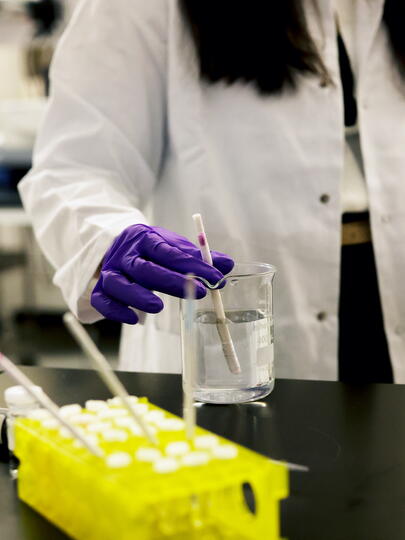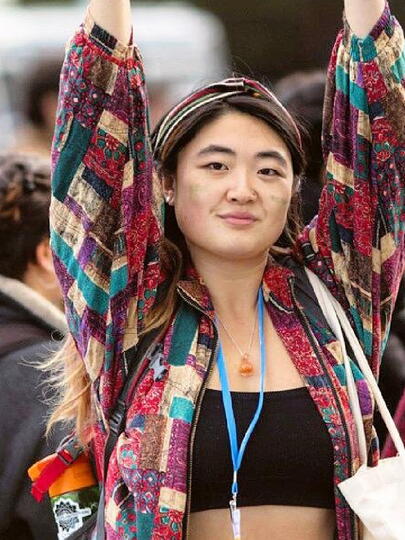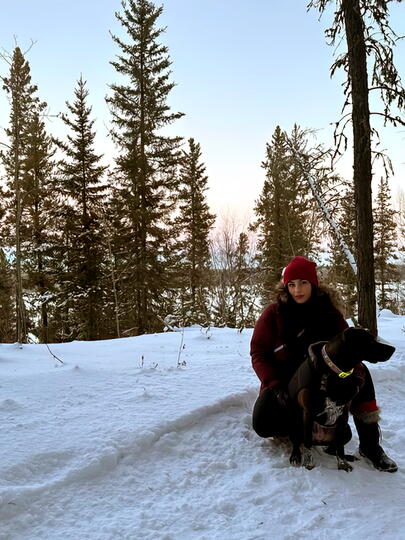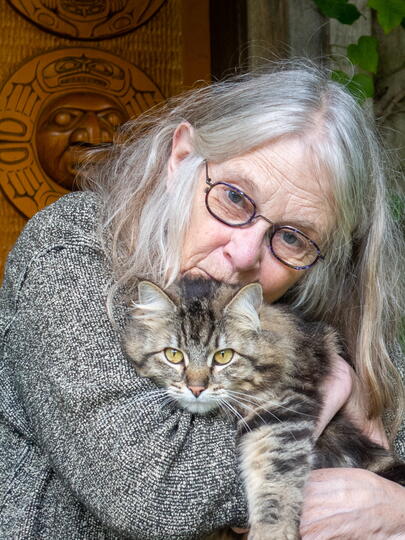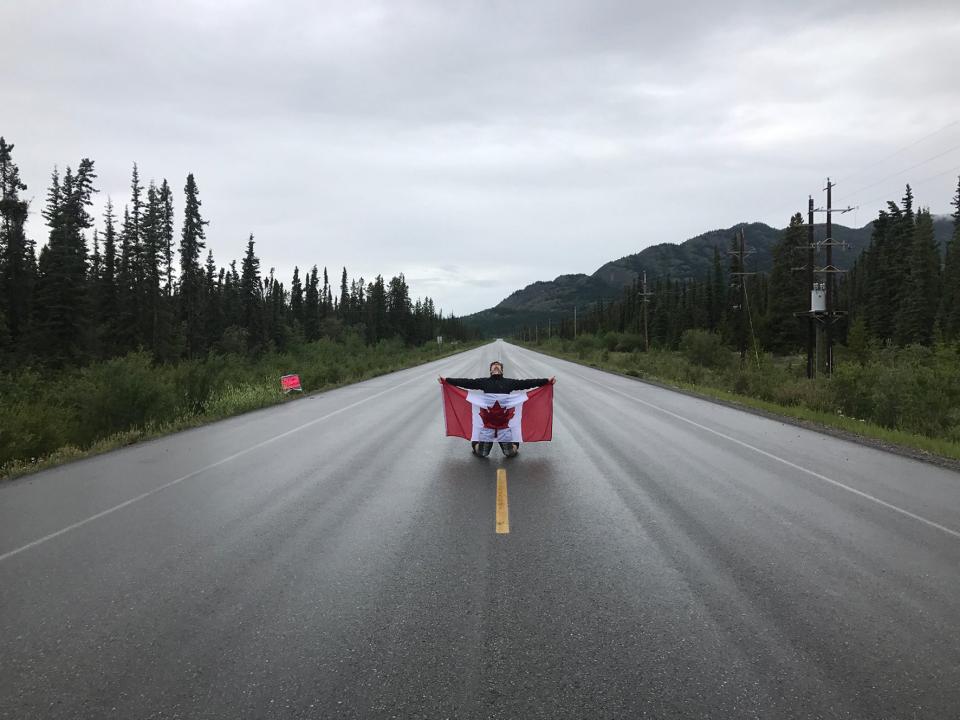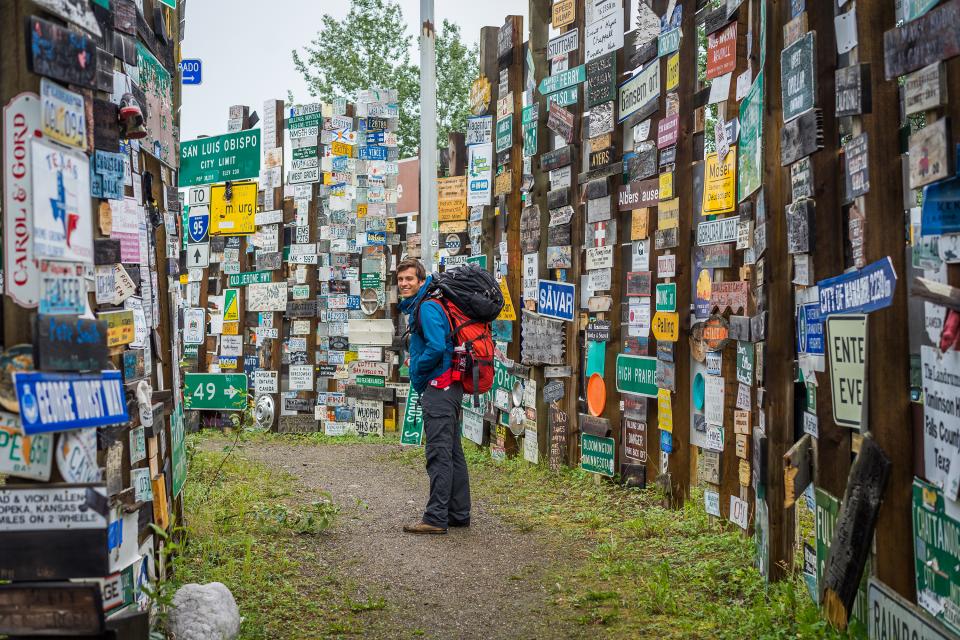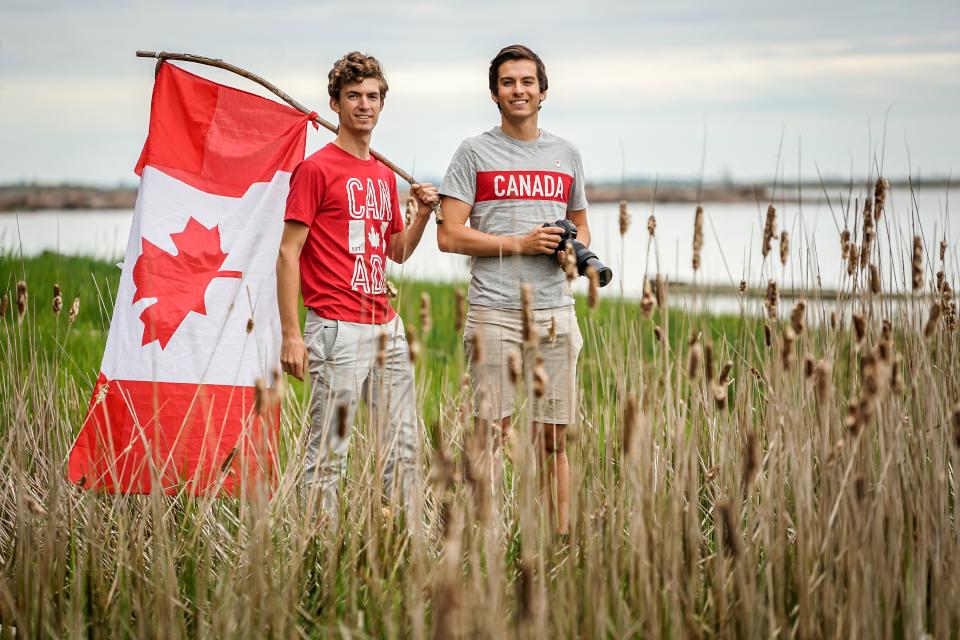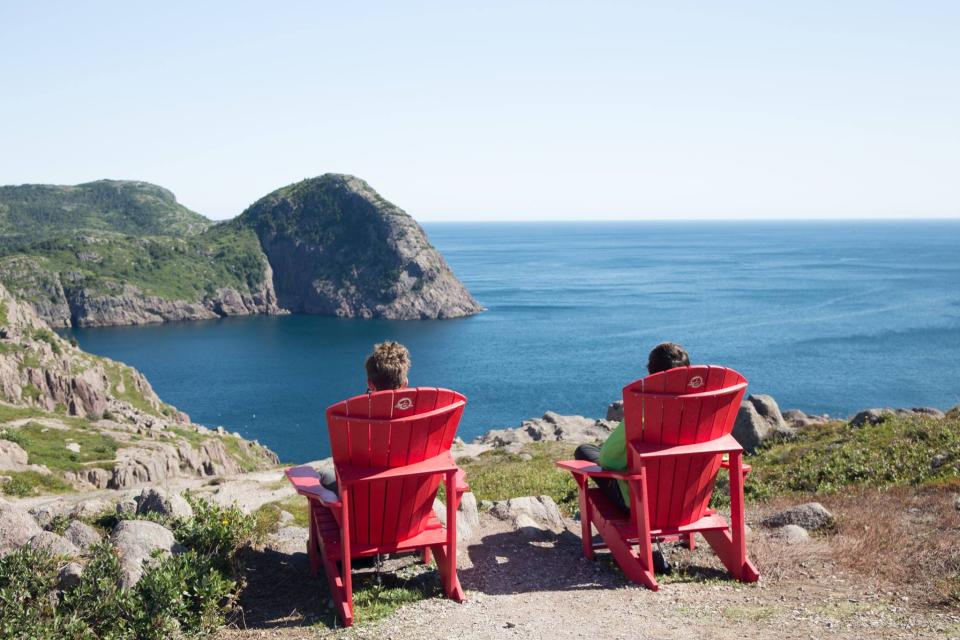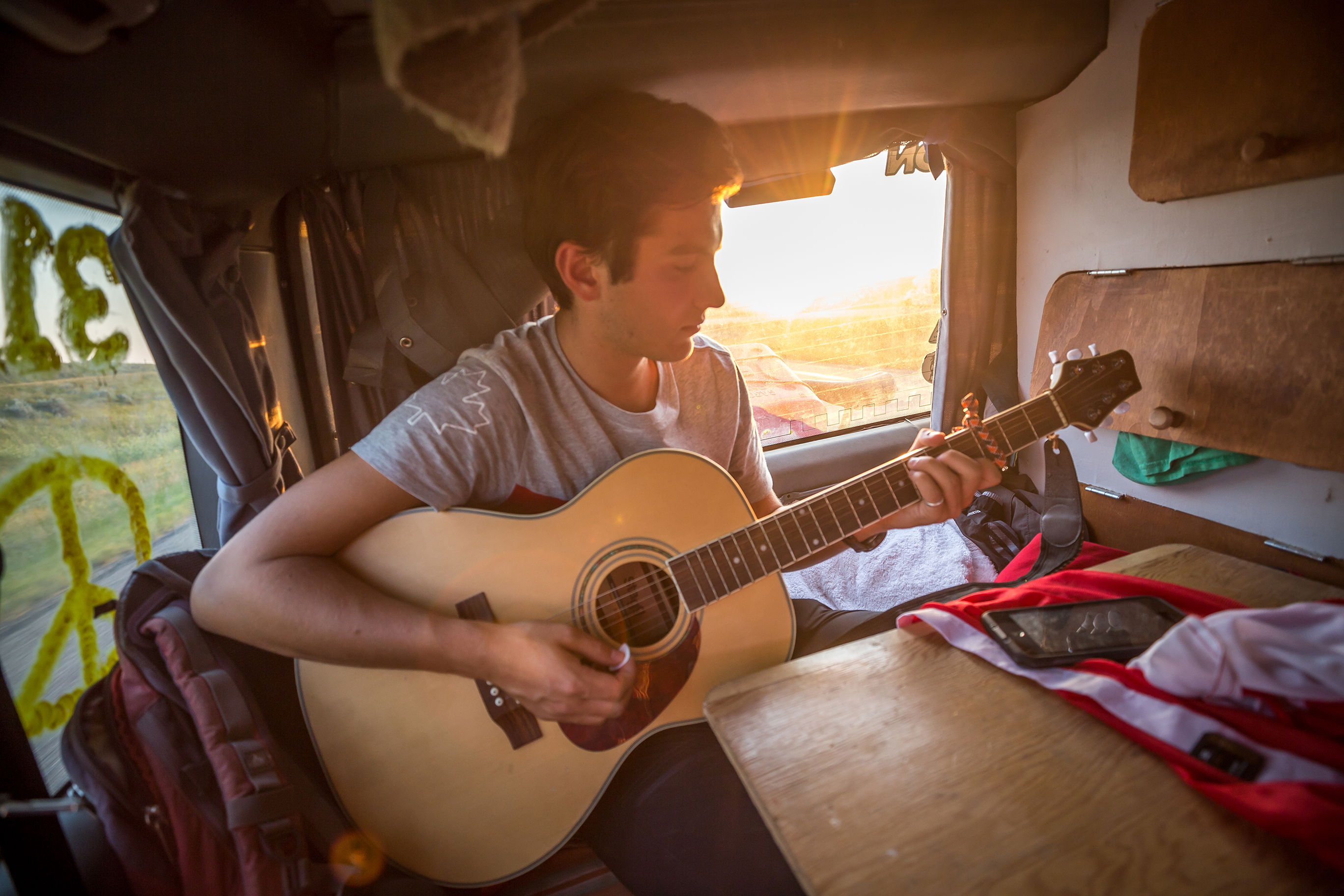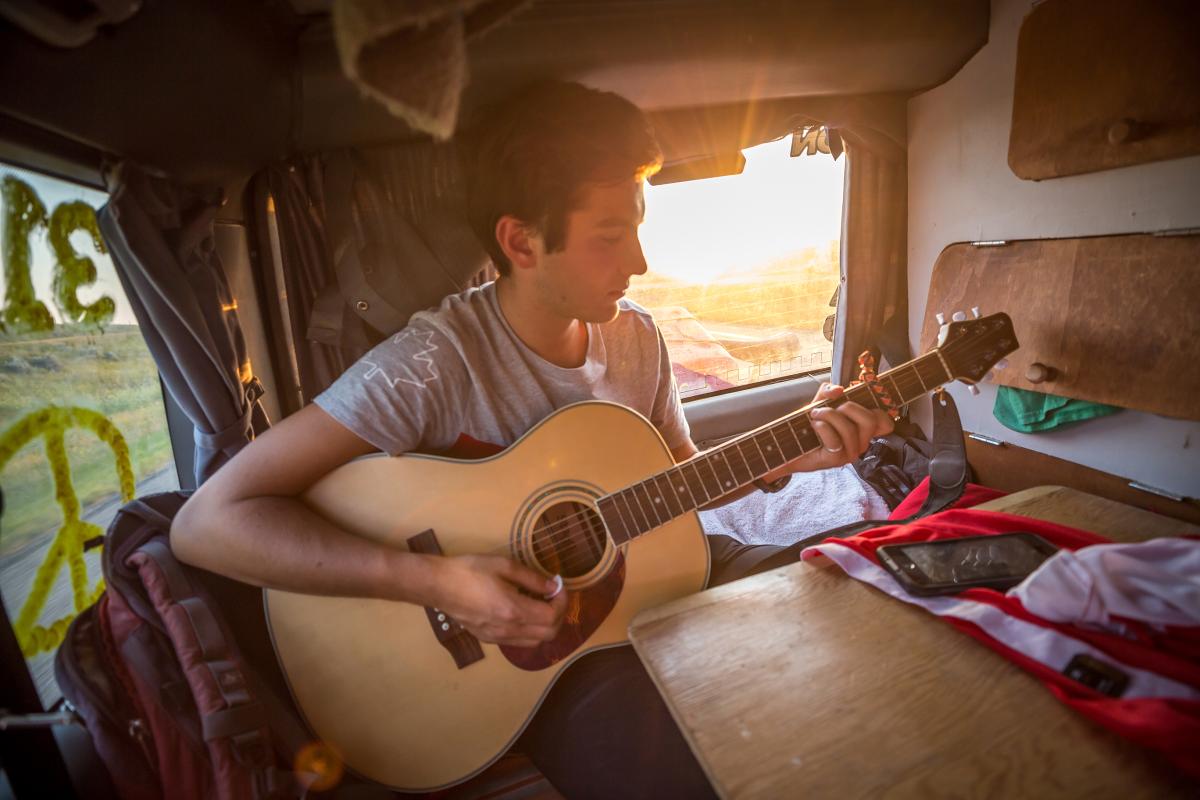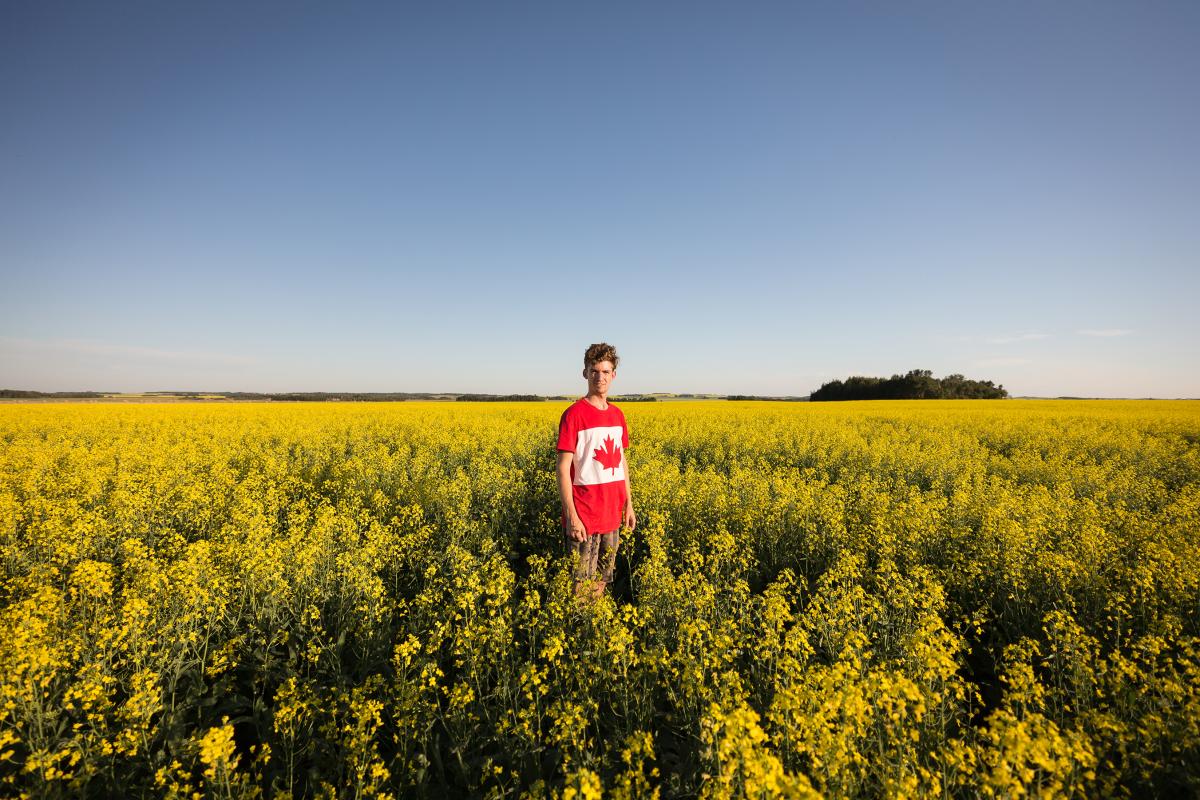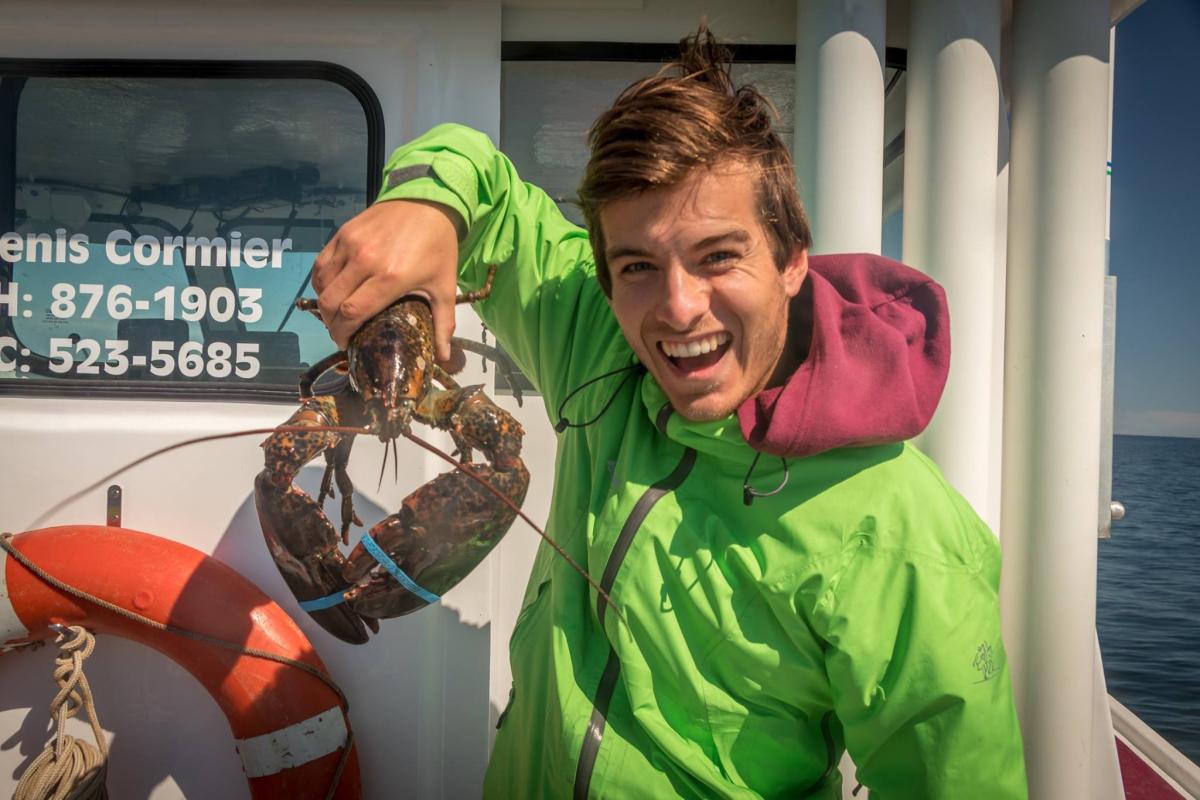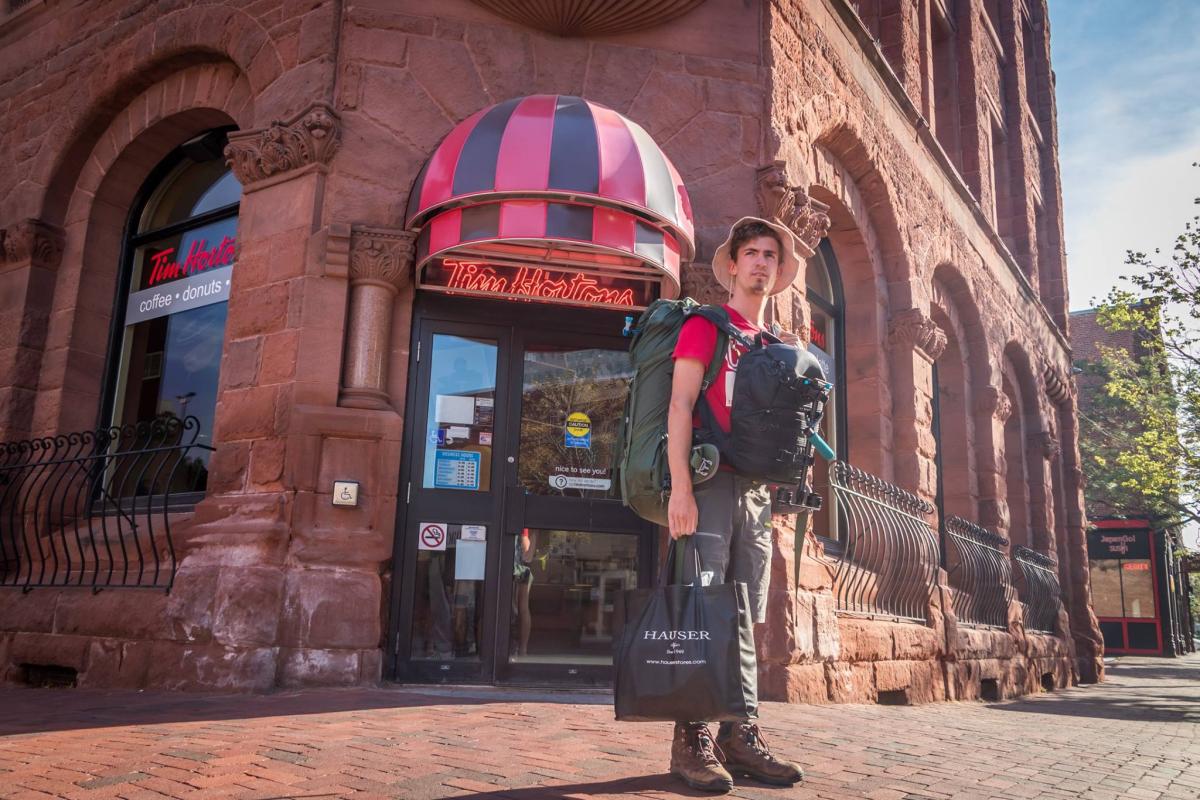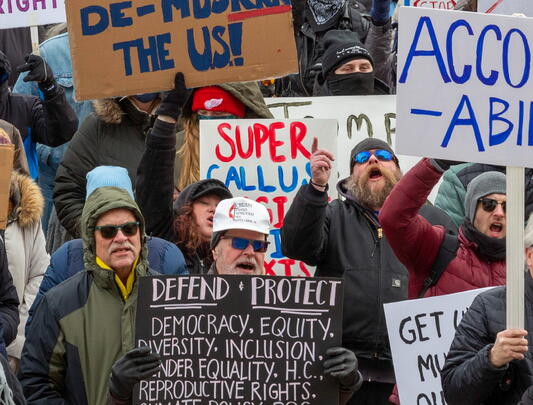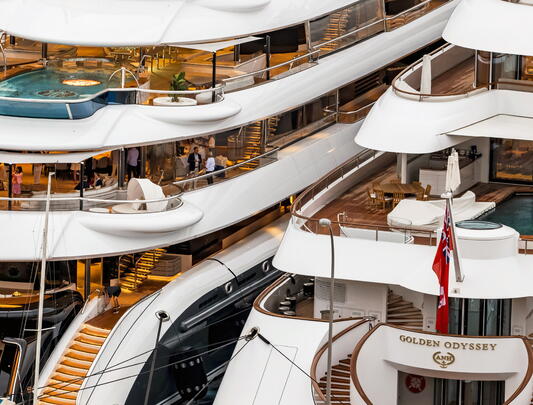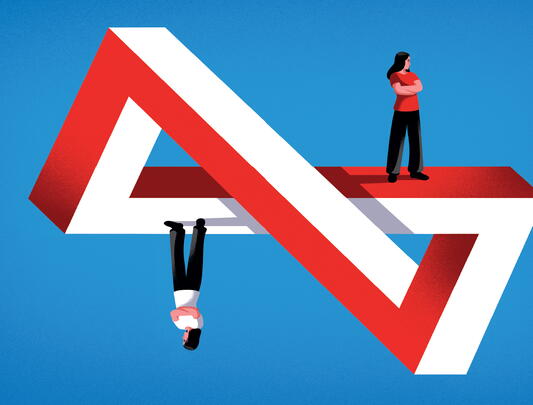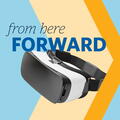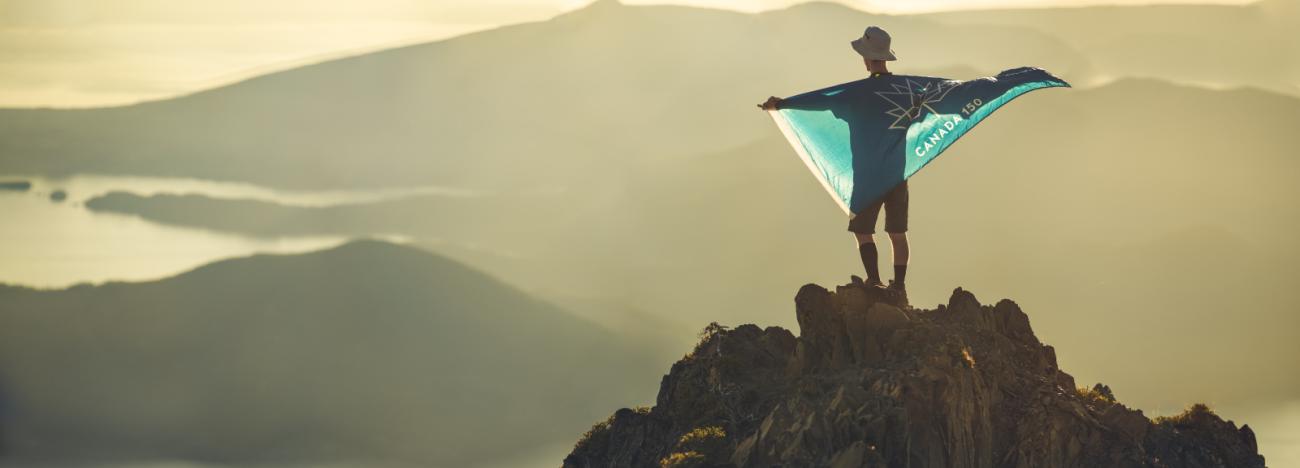
Expedition Canada 150
Two UBC grads thumb their way across Canada.
A coming of age ritual shared by young men and women over the eons has been the grand travel adventure to vaguely romantic, unknown places. In 19th century England, for example, some young adults ventured to Italy and France to live in villas, drink wine and write intense, intellectual novels, while 20th century middle‑class youths from North America (when they weren’t fighting in wars) took to the byways of Europe or Asia to find themselves, drink wine and write wistful novels of love and alienation.
This summer, Ori Nevares and Philippe Roberge, two BASc’17 grads, chose the budget-conscious Canadian version of the travel adventure: they decided to hitchhike from Whitehorse to St. John’s, to learn a little bit about themselves and a lot about their own country. They called their project Expedition Canada 150 for two reasons: Canada’s 150th, obviously, and because they carried just $150 each in cash. They hoped to prove that frugal travel was still possible in this expensive age, and to take the pulse of Canadians vis a vis our reputed friendliness and generosity.
“Last year we took some friends and did a tour of the west coast of North America by car,” says Nevares. “We wanted to see how far we could get in six hours of nonstop driving. But this year we wanted to do something to celebrate Canada’s 150th. And since neither of us had ever really seen much of Canada, it seemed like the perfect opportunity.”
They decided to record their voyage with weekly video blogs, social media pages posted with their progress, and portraits of the men and women they met along the way. They plan to produce a documentary (“We have more than 600 gigs of video,” says Roberge), and write a book about their adventure.
To organize for the trip, they got sponsorships from Canon, who supplied the camera, L’Oréal (for sport sunblock) and Bergans, an outdoor clothing company from Norway. They made “Canada” signs, carried large Canadian flags, filled backpacks with clothes and camping gear, and prepared themselves to look like who they were: two wholesome students on their way across the country. They flew to Whitehorse – chosen as the point of departure because it is the farthest west of larger Canadian cities – and on day one of their adventure, they hauled themselves and their packs to Highway 1 and stuck out their thumbs.
Hitchhiking was fairly easy, according to both, though they did have some long waits. “Our longest wait was about four hours on Highway 2 between Edmonton and Calgary,” says Nevares. “We were in the middle of nowhere and the cars just went whizzing past at 120 kph. We couldn’t walk anywhere, because an hour in either direction got us to a similar stretch of road.”
Once in a car, they would make a point of asking the driver the same four basic questions: How did your family come to Canada? What’s your favourite thing about Canada? How did you hear about our project? What’s the best piece of advice you can give us? These interviews, together with the blogs, will form the basis for the upcoming doc and book.
“In Brandon, we went through a big storm and a tornado. That night we got to sleep under a bench at a Tim Horton’s, all wet and miserable.”
“It wasn’t a piece of cake,” says Roberge. “It was a tough slog, especially the first part. In Brandon, we went through a big storm and a tornado. That night we got to sleep under a bench at a Tim Horton’s, all wet and miserable, and we thought, ‘What are we doing? We could be home in Vancouver with our friends, my girlfriend, having a great summer!’”
“People were amazing, and incredibly generous,” says Nevares. “But they’d say how jealous they were of what we were doing, that they envied our life. And I’m thinking how exhausted I am, and that I have to sleep on the floor on the ferry to Newfoundland, using my sweater as a pillow.”
From the beginning, they were able to depend on the kindness of the strangers who had seen their blog and social media postings for food and, often, lodgings, but Winnipeg was the turning point. They were interviewed by the local CBC station, which plugged their social media presence and made a big deal of their adventure. From then on, they became minor celebrities. “We got way more offers for accommodation than we needed. It was an amazing response,” says Roberge. They were even comped the ferry ride to Newfoundland. Ultimately, they ended up spending under $10 of the $300 they took with them.
“Altogether, we had something like 58 rides between Whitehorse and St. John’s,” says Nevares. “People always ask us if we had any negative experiences, and quite honestly, we didn’t. There were some dodgy people, for sure, and one guy who kept talking about the coming apocalypse, but he was really quite cool. At no time did we ever feel threatened or unsafe.”
“Ninety-nine per cent of the people we met were friendly, encouraging and incredibly generous,” says Roberge. “And they’d tell you things about themselves they’d probably never tell anyone else. I guess they think they’ll never see us again. But we heard about peoples’ divorces and other family secrets.”
“The people were incredible. It’s the best adventure I’ve ever had in my life.”
“The hardest part,” says Nevares, “was staying positive. You’re on the road for hours, waiting for a ride, then in the car for hours more, all after sleeping the night before on a bench, and you have to be friendly and interested. You can’t just fall asleep, even though you’re totally exhausted. Then, when you get somewhere at the end of the day, when some generous person has put you up for the night in their house, you have to be on your best behaviour over dinner with the family. And before you can go to sleep you have to write and upload the day’s blog, along with any video footage. But at the end of it, none of that matters. The people were incredible. It’s the best adventure I’ve ever had in my life.”
The grand adventures of youth frequently produce bits of knowledge and insight that a person can use to great advantage in adulthood. Did that happen for Nevares and Roberge?
“No question,” says Nevares. “It’s the advice we heard from just about everybody we met along the way: ‘Live for today. If you have a dream, go for it.’” “People praised us for being brave, for doing the impossible,” says Roberge. “But we’re just normal guys. We’re not super smart or super strong people. We just decided to do it. If we can do something like that, anyone can. You just have to decide to take the first step.”
“Our first step was to buy the plane tickets from Vancouver to Whitehorse,” says Nevares. “Once we did that, there was no turning back.”
“Right,” says Roberge. “We didn’t buy flight cancellation insurance. We had to go.”
For more on Expedition Canada 150, visit expeditioncanada150.com and facebook.com/expeditioncanada150


